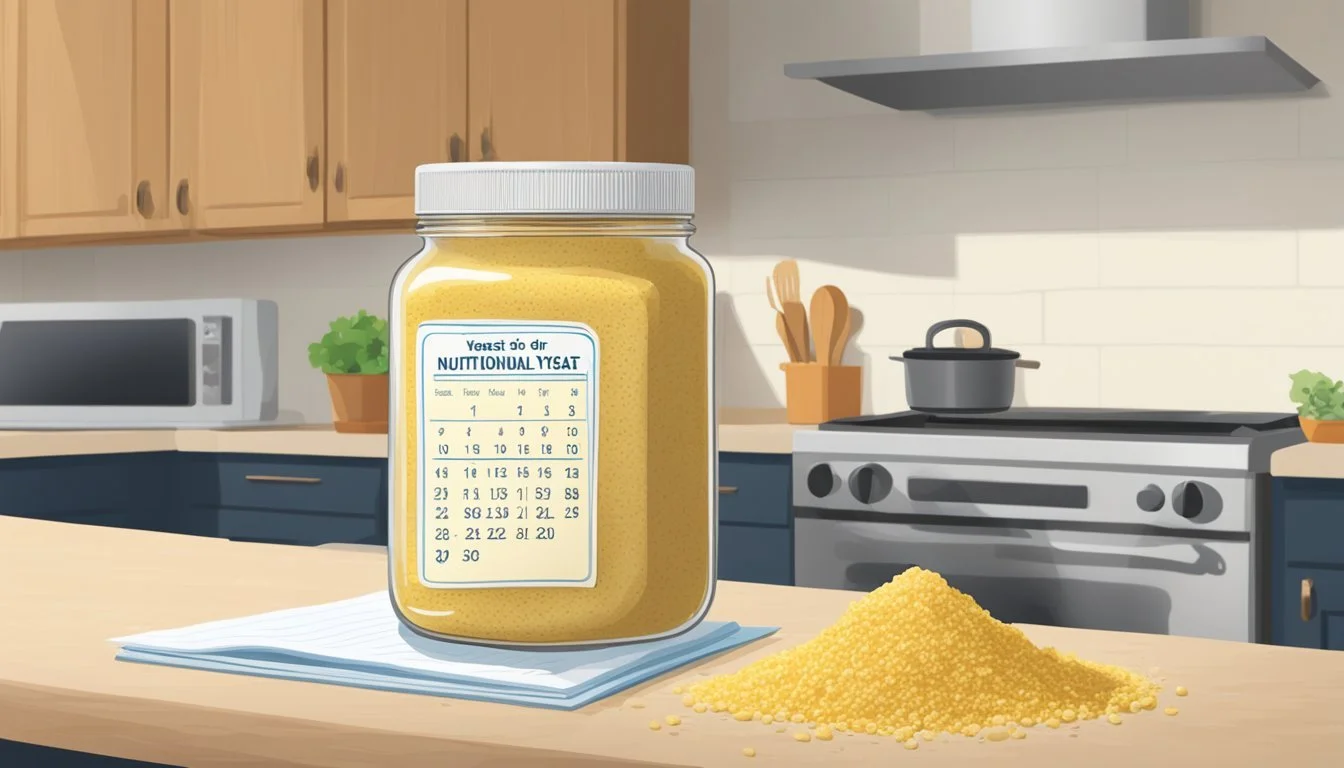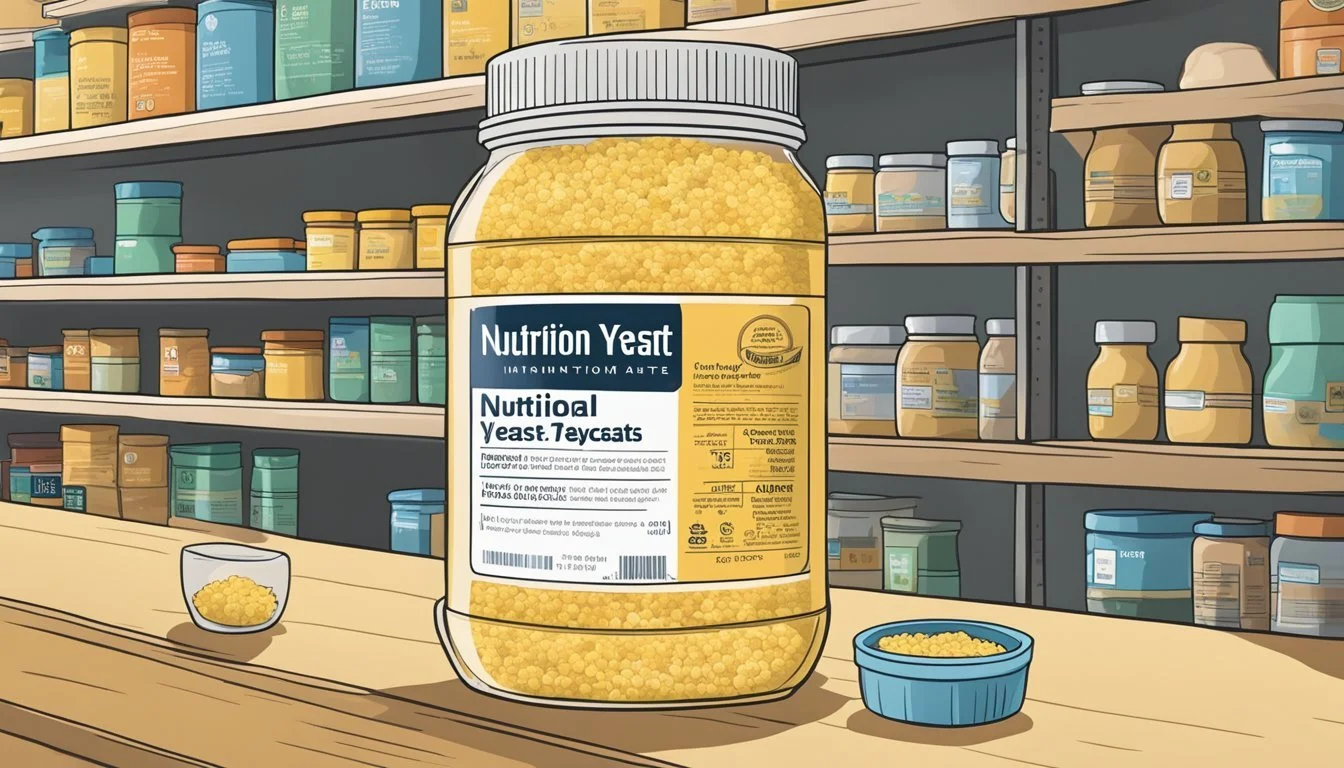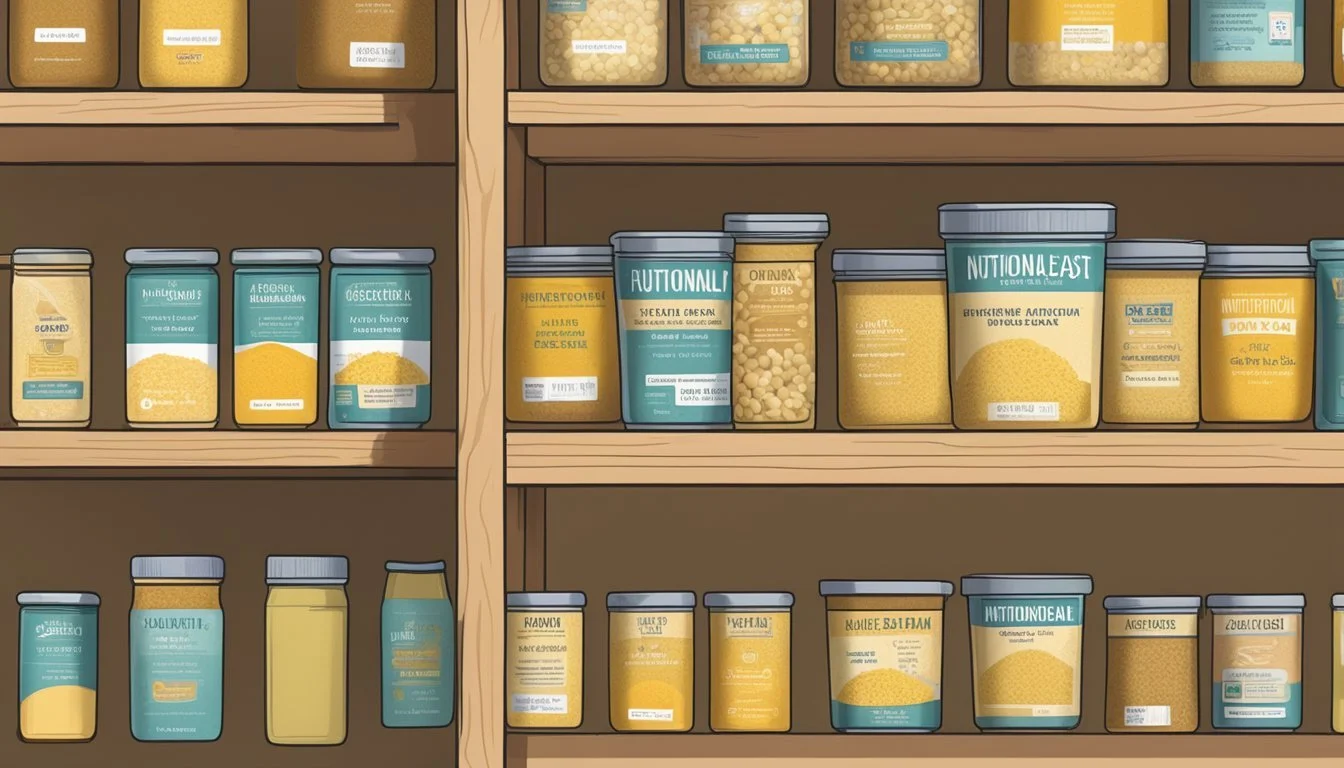Does Nutritional Yeast Go Bad?
Understanding Shelf Life and Storage Tips
Nutritional yeast, a deactivated yeast often used by vegans for its cheesy flavor and nutritional benefits, is generally shelf-stable due to its dry form. Like many pantry items, however, it is not immune to spoilage over time. Factors including storage conditions greatly influence its longevity, with optimal storage potentially extending its shelf life.
The average shelf life of nutritional yeast is reported to range between 12 to 24 months when stored correctly. It's important to store it in an air-tight container away from moisture and light, which can degrade the quality. Indicators such as a change in smell, taste, or appearance suggest that the nutritional yeast may have gone bad and should not be consumed.
Understanding Nutritional Yeast
Nutritional yeast is a cherished staple in plant-based cooking known for its cheesy flavor and impressive nutrient profile. This section explores its composition, appeal to vegans, and versatility in culinary applications.
Definition and Nutritional Profile
Nutritional yeast is a deactivated yeast, often a strain of Saccharomyces cerevisiae, that is sold in the form of flakes or powders. It is rich in protein and B vitamins, including B12, which is especially important for vegans and vegetarians. Additionally, it often contains zinc and folic acid, among other essential nutrients.
Nutrient Benefit Protein Supports muscle repair and growth B Vitamins Aid in energy production and cognitive health Zinc Necessary for immune function and DNA synthesis Folic Acid Important for cell growth and metabolism
Vegan-Friendly Cheese Substitute
For those on a vegan diet, nutritional yeast serves as a perfect substitute for cheese due to its savory, umami flavor. It does not contain any animal products, fitting seamlessly into vegan and vegetarian lifestyles. It can be sprinkled on pasta, popcorn, and salads to mimic the taste and texture of grated cheese.
Versatility in Cooking
Nutritional yeast is prized for its versatility in cooking. Plant-based eaters often incorporate it into various recipes to enhance flavor without compromising nutritional value. It can be used to thicken sauces and dressings, or as a seasoning for roasted vegetables. It adds a depth of flavor to soups, stews, and even homemade vegan cheeses.
Shelf Life and Storage
A key aspect of maintaining the quality of nutritional yeast is understanding its shelf life and how proper storage conditions can extend it. This section delves into the factors that can affect the shelf life of nutritional yeast, optimal conditions for storage, and how to determine its expiration date and freshness.
Factors Affecting Shelf Life
Temperature: Nutritional yeast should be stored in a cool, dry environment. Elevated temperatures can hasten its degradation.
Moisture: Humidity can lead to clumping and spoilage, reducing the product's shelf life.
Light exposure: Prolonged exposure to light can degrade the quality of nutritional yeast, making a dark storage location preferable.
Optimal Storage Conditions
To ensure maximum freshness, nutritional yeast should be stored as follows:
Temperature: Ideally in a pantry or cupboard at room temperature, away from direct heat sources.
Container: In an airtight container to prevent moisture and other contaminants.
Location: A dark, dry place to reduce light exposure and potential dampness.
Storage Location Container Type Expected Outcome Pantry Airtight container Shelf-stable, extended shelf life Refrigerator Glass jar Further protection against temperature fluctuations Freezer Freezer-safe container Suitable for long-term storage
Expiration Date and Freshness
Expiration Date: Typically, nutritional yeast comes with an expiration date that indicates its expected shelf life, usually between 12 to 24 months.
Freshness Indicators: If nutritional yeast develops an off smell, changes in color, or becomes clumpy, these are clear signs that it has passed its prime and should not be consumed.
Signs of Spoilage
When it comes to nutritional yeast, certain indicators suggest spoilage. A keen observation of appearance, smell, and taste can help determine if the product has gone bad.
Changes in Appearance
A fresh supply of nutritional yeast typically presents as a bright yellow powder or flakes. Signs of spoilage in appearance include:
A shift in color to a darker yellow or brown
The presence of clumping which may indicate moisture intrusion
Alterations in Taste and Smell
Nutritional yeast should have a nutty, cheesy taste and a pleasant aroma. When spoiled, one might notice:
A bitter or unusual taste that deviates from the norm
An off smell that could be described as stale or spoiled, rather than its characteristic yeasty scent
Mold and Contamination
Mold growth or signs of contamination are clear indicators that nutritional yeast has gone bad. They include:
Visible mold spots, which can be white or various colors
Any foreign objects or insects found within the packaging
Contamination or mold presence warrants immediate disposal of the product to prevent health hazards.
Usage and Benefits
Nutritional yeast is a versatile ingredient favored for its nutritional benefits and its ability to enhance flavors in a variety of dishes.
Nutritional Enhancements in Diet
Nutritional yeast is a powerhouse for dietary supplements, loved particularly by vegans for its nutrient profile. It is an excellent source of B vitamins, including B12, which is essential for vegans and vegetarians as it's typically found in animal products. It contains protein, fiber, and minerals such as zinc and selenium, making it not just a flavor enhancer but a significant nutritional addition to diets. Moreover, its low-glycemic nature makes it a favorable choice for maintaining blood sugar levels.
Culinary Uses
In the kitchen, nutritional yeast is prized for its nutty, cheesy flavor, which makes it a popular substitute for cheese, especially in vegan cooking. It can transform a simple dish of pasta with its rich umami taste, or be sprinkled over popcorn for a healthy, flavorful twist. Its ability to create a creamy cheese sauce without dairy is another reason for its popularity. Nutritional yeast can also be used as a seasoning in soups and stews, adding a depth of flavor that might otherwise require meat or cheese.
Safety and Health Considerations
Ensuring safety and maintaining health are critical when considering the consumption of nutritional yeast, especially regarding its shelf life and potential allergies.
Potential Risks with Expired Yeast
When nutritional yeast expires, it may not pose an immediate health risk, but its nutritional value can diminish over time. Expired yeast could potentially lose some of the B-vitamins for which it is valued, such as B12, thiamine, riboflavin, niacin, and folic acid. Indicators that nutritional yeast has gone bad include an off-smell, color changes, or becoming clumpy. In such cases, it is safer to discard the yeast to avoid the risk of consuming an inferior product that could lead to health complications.
Allergy and Intolerance Information
Nutritional yeast is naturally gluten-free, making it a suitable option for individuals with celiac disease or gluten intolerance. However, some may experience an allergic reaction or intolerance to yeast. Symptoms can include gastrointestinal issues or other allergic responses. It is important for consumers to be aware of their body's reactions to yeast and consult healthcare providers regarding any adverse effects they experience.
Purchasing and Storage Guidelines
When selecting and storing nutritional yeast, a consumer must consider not only factors related to freshness and nutrient content but also how quantity affects longevity. High humidity and exposure to light and heat are known to accelerate the degradation of nutritional yeast, causing loss of nutrients and potential spoilage.
Buying the Right Quantity
One should buy nutritional yeast in quantities that align with their usage patterns. Nutritional yeast often comes with an expiry date or a best before date, typically two years from the production date. Purchasing too much may lead to waste if it cannot be consumed within this period. Consider these factors:
Usage frequency: Estimate how often you'll use nutritional yeast.
Storage availability: Ensure you have a dry and cool space for storage.
Longevity Tips for Bulk Purchases
If one opts for bulk purchases to benefit from cost savings or reduce packaging waste, the following guidelines are crucial to maintain the quality of nutritional yeast:
Storage conditions:
Dry: Store in an airtight container to keep out moisture which could lead to spoilage.
Cool: A pantry or even refrigeration can prolong freshness.
Dark: Light exposure should be minimal to preserve nutrient content.
Avoiding degradation:
Humidity: Ensure the storage area is low in humidity to prevent moisture build-up.
Condensation: If refrigerating, let the yeast reach room temperature before use to avoid condensation.
Heat: Steer clear from placing it near heat sources as heat can accelerate nutrient loss.
Through these specific guidelines, one can ensure they purchase the right amount of nutritional yeast and store it in a way that maximizes its shelf life and nutrient content.





